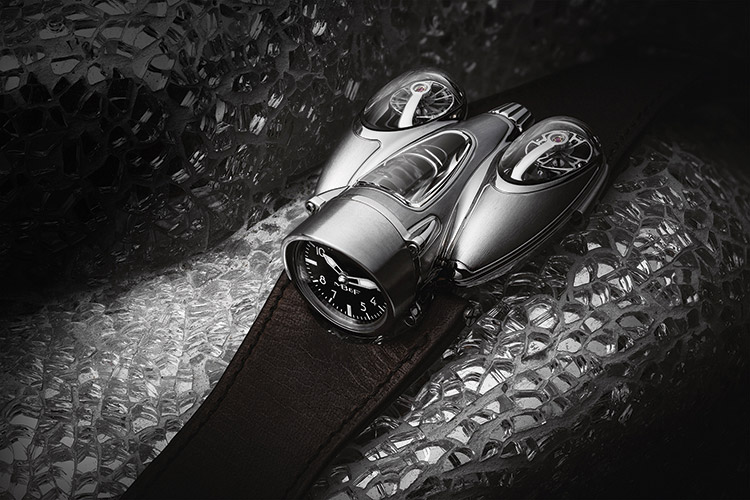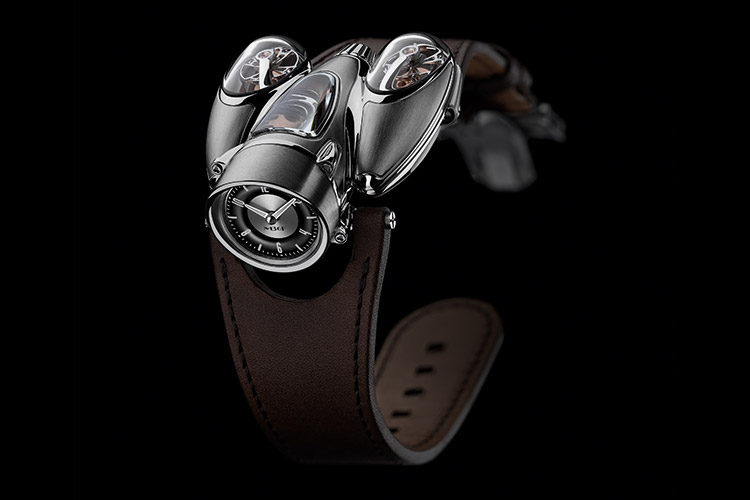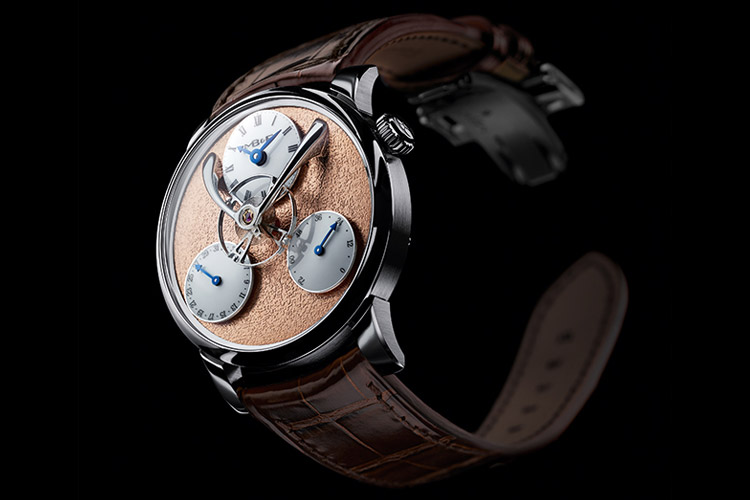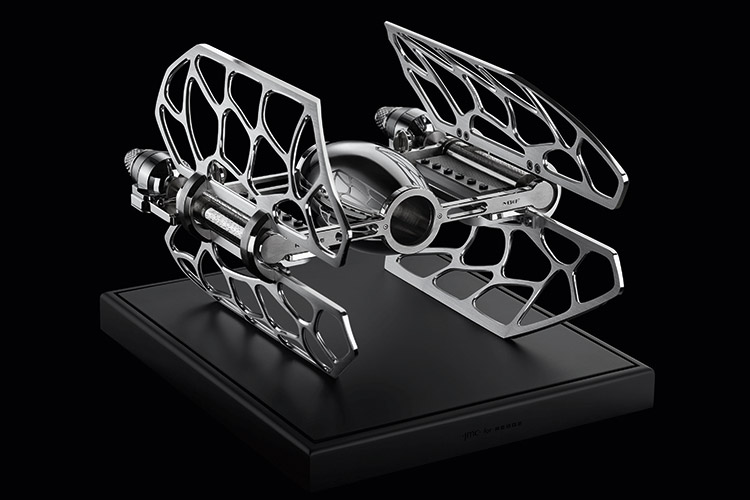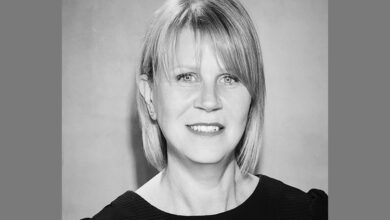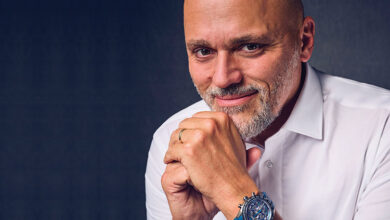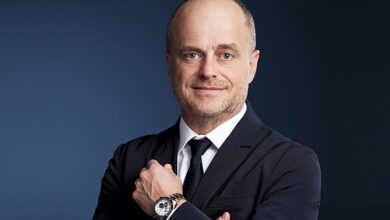MB&F and artistic influences
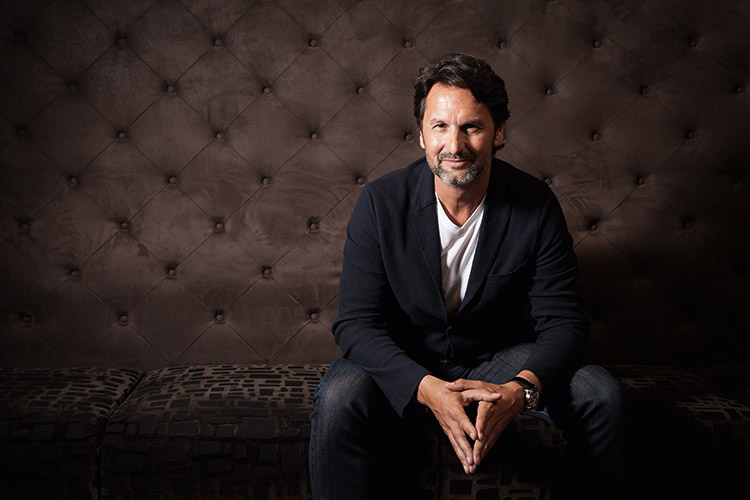
“Day & Night” magazine caught up with Maximilian Büsser – Founder, CEO and Chief Creative Officer of MB&F – for a chat on the new HM 9, his inspirations, and the MB&F M.A.D. Gallery Gallery M.A.D. Gallery
Can you tell us about the HM 9 ‘Flow’, and why it is named Flow?
When I create today, I do not start by thinking I want to create something inspired by a car or a plane, etc. I have visions – I know it sounds weird, but I am sitting in my garden in Dubai and I see the piece. This is my first sketch and, as you can see, it is for the first time that – from the sketch to the end product – we have a 98 per cent match. It is only after I see it that I realise where the influences came from. In this case, they are the airplanes and cars designed in the 1940-1950s, before the concept of wind tunnels completely changed the way cars and planes are designed because they brought in efficiency. Before that, when you were designing a plane, you had no idea if the plane was going to be efficient or not. You designed it to look fast and hoped it didn’t crash.
For me, some of the most beautiful planes and cars were designed in the 40s and 50s. Air flow is the whole idea, so when you look at my piece you get the impression that it is actually going to fly away. That is the impression I wanted to create – as much in the watch as in the movement. When you see the movement, you get the impression that it is taking off.
So why did you decide to go with Road and Air editions?
Because this is the first time that my inspiration has been double; usually it is very clear. It is a car, a plane, a jellyfish, and so on. This time, when I looked at my design, it was as much a plane as a car and so I decided to have two options. The launch edition is going to be 66 pieces, 33 of each. It is going to take us two years to craft two editions of 33, and then we will see how it goes.
Of the four elements, you are missing space and water?
The influence here is definitely planes and cars, so we will continue in that line; perhaps in 2020 we may widen it.
Did the HM4, one of your most popular designs, influence the HM9 in any way?
If you look at it, the central part is clearly HM4; in one way, you realise that you cannot escape yourself. I have been trying, from the very beginning, to do something very different in every HM but when I put them together on the table, everyone comments on how coherent they are. I have been trying to go in different directions, but you can’t escape yourself.
But they are not coherent; they are all very different?
I think they are very different, but at the end of the day all the fundamentals are the ones that makes me happy; they are my taste. So, in this case, the central part is from the HM4, and the design from HM6. So, in a weird way, whatever I create is going to influence me in the future. Coco Chanel once said “He who insists on his own creativity has no memory”, meaning that people who think they are very innovative do not realise that they are innovative because of all the influences they have had throughout their lives. Everything that nourishes me brings me to the next step.
You have unveiled a new edition of the LM2 Purple; why did you go back to the LM2?
Legacy Machine 2 was a stepping stone to the HM9 movement with its double balance wheels. We cut our teeth on that for four years, which then allowed us another four years to do this. We are yet to craft 100 pieces of LM2 since 2013. We decided to stop the White Gold by putting the purple dial, of which there are only 12 pieces. Next year, we will stop the Red Gold putting another dial, also of 12 pieces. That would bring us to around 100 watches over a period of seven years.
Would that be the cut-off point for LM2?
I am not sure about that.
How has the response been for moving the M.A.D. Gallery Dubai to The Dubai Mall?
It is very good; because Alserkal is an outdoor location, for 4-5 months during summer we had virtually no visitors, whereas in The Dubai Mall in summer, we worked incredibly well. The other difference is that, and I amazed about this, nearly 90 per cent of the people who came into the Gallery – whom I spoke to – actually know MB&F, which was not the case in Alserkal. I think it is two different public spaces; I liked Alserkal, it is a very nice place. But, economically, it is much more impactful to be here in The Dubai Mall.
Are you planning to open a M.A.D. Gallery in London or the USA?
We are opening the fourth M.A.D. Gallery in Hong Kong in October, our second one in Asia. We have them in Hong Kong, Taiwan, Dubai, and Geneva. The plan is to open the next one in London next year. We have to first find the right location; the biggest issue, honestly, is finding enough art pieces. Since we moved into The Dubai Mall, we have been selling so many art pieces that we are virtually out of stock. The artists do not have enough stock, so if we want to re-order something, we are told that it will be fulfilled after six months, because most of them are made by hand. Also, our sales volume shot up after moving here from Alserkal; of course, the team did not know this would happen and now we are continuously looking for more stock and it is complicated.
We need to do at least three to four openings or events a year with new artists. It is not easy to go with only three, but five is a lot because there are very few artists who fit the M.A.D. Gallery’s ambit. So, the more galleries I have, the more challenging it is going to get.
Why haven’t you had more Music Machines that have been such a hit earlier?
Next year in Basel, you will see a completely new Music Machine, which is our new collaboration with Reuge.
What do you see as the future of the Legacy Machines?
We are going to move the Legacy Machines to a completely new concept next year. The Split Escapement was the fifth and last of the series as you know them today – with that case and implementation of dial, and so on. We are taking the whole line to a different level, it will still of course be classic, but also a little bit more crazy.
